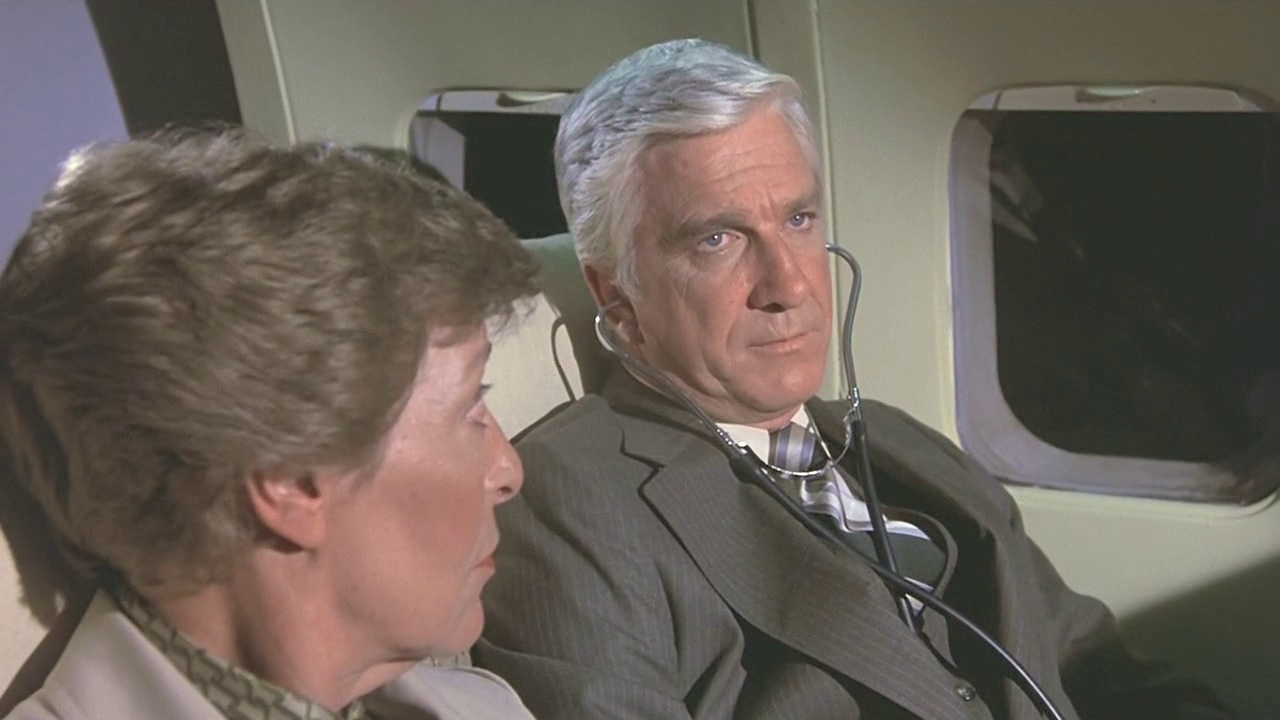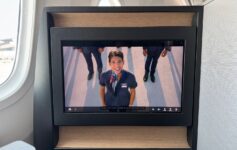
A passenger seated a few rows in front of me suffered a seizure on my flight yesterday. Incidents like these always focus my thoughts on the fragility of life and make me so thankful for those willing to step up in time of need.
Seizure On My Flight
Just 20 minutes after takeoff, I suddenly heard a commotion in the cabin and looked up to see a man shaking violently a few rows ahead of me. Several passengers screamed and a flight attendant darted over. Another appealed to passengers for assistance over the PA system:
“If there are any medical professionals onboard, please identify your immediately.”
Three people seated in business class jumped up and volunteered their assistance. The man had some medication in his bag and was shortly stabilized, though not before he was placed on oxygen for the remainder of the flight. Paramedics met us at the gate and the man was whisked off and examined in the terminal.
It was comforting to see the three medical professionals (whether they were doctors or nurses I do not know) so carefully attend to the patient and spend the next hour watching over him.
No diversion was needed and other than a delay to meal service, the flight proceeded as normal.
I’ve never witnessed death on a plane before, but it happens. Thankfully it was just a seizure on my flight. But to see someone lose all control and shake violently also shakes you up.
What if there was no nurse or doctor onboard? How do you treat someone who is having a seizure?
It made me think of the father of a friend of mine. All of a sudden, a couple months ago, he started having seizures. Doctors were not sure why, ran some tests, and discovered he had stage-four brain cancer.
He was dead less than a month later.
We can’t all be doctors. But as I sat paralyzed watching yesterday’s incident unfold, I did pull out my laptop and begin researching how you help someone who is having a seizure.
As always, assistance should be left to medical professionals, but if you are ever in a situation in which it’s all up to you, hopefully this will help you, courtesy of Cedars Sinai:
- If the person is not already on the floor, help lower them gently to the floor.
- Turn the person on their side. This will help keep their airway open so they can breathe.
- Place something flat and soft, like a folded jacket or blanket, under their head.
- Loosen ties, collars or anything around the neck.
- Remove their eyeglasses, if they wear them.
- Move anything hard or sharp away from the person to prevent injury.
- Time the seizure. Most last a minute or so. If the seizure lasts five minutes or longer, call 911.
- Stay calm and speak to the person in a calming tone.
- Stay with the person until they are fully awake. When the seizure ends, help them sit in a safe place. Explain very simply what happened.
- Check for injuries after the seizure.
- Help arrange for transportation, if necessary.
- Remember as many details as you can about what happened during the seizure and write them down. The person who had the seizure may not remember what happened, and this information may be important to give to their doctor.
And here’s what NOT to do:
- Do not place anything in the person’s mouth. A person having a seizure will not swallow their tongue.
- Do not hold the person down or try to stop them from moving.
- Do not give mouth-to-mouth breaths.
- Do not offer food or water until the person is fully alert.
CONCLUSION
I do realize seizures are fairly common (1 in 10 will experience one in their lifetime) and not necessarily life-threatening. In that sense I am not trying to be overly dramatic. Still, to see someone shake uncontrollably is extremely unsettling.
Cherish those friends and family members you love and who love you and perhaps even those who do not. Time flies by so quickly. Reconciliation and forgiveness are blessed gifts that liberate the soul. You never know when you will be trust into a position in which someone needs your help. As best as you can be, be ready for that day. And treasure each day you are given, for it may be your last.
image: Airplane!




I once took a CPR class and, shortly afterwards, was on a flight where there was an announcement for help. They accepted my help when I disclosed how much I knew and didn’t know. I did not tell them that I did not stay at a Holiday Inn Express recently. The ambulance met the plane, which diverted to Keflavik, Iceland. The captain rewarded me by allowing me to accompany him to the airport shops while the plane was waiting.
Many airlines have a link so that the captain or crew can communicate with a company that gives medical advice. Lufthansa has a roster of doctors. Any doctor can submit documentation then get something like 5,000 Lufthansa miles and a medical textbook as a gift. Lufthansa then knows which passengers are doctors registered with them as long as the doctor passenger has their frequent flyer number on their PNR (airline ticket).
In the movies, when someone is lapsing into a coma and dying, others slap them and say “stay with me” or “stay awake”. This is hilarious and sad. When you are in the ICU loosing conscientiousness, the ICU doctor or nurse does not start smacking you in the face. They give oxygen, antibiotics, medication, etc. And they let you sleep.
I asked a doctor once and the doctor said that he didn’t know of any reason or illness where slapping you in the face helps.
As a EMT-B, in addition to what is listed in the article, I’d ask if there was anyone traveling with the passenger that may know something about his medical history, including if the passenger has any medications with him. In addition, once the passenger is conscious and able to swallow, I’d ask the passenger to drink some orange juice as a cause of the seizure may be hypoglycemia. If the seizure is prolonged, I’d ask the FA for the oxygen kit. Other than that, not much can be done on a flight as meds are likely not available.
Great advice. Most people don’t think about family or friends traveling with the passenger. They could provide needed information.
I wouldn’t heed the call if I was a doctor. Next thing you know you’re spending the night in Lubbock at a Motel 6 with a $15 voucher from Cinnabon.
Wow. Just wow
You’re obviously not a fan of Curb Your Enthusiasm. Search YouTube
Please have let this have UA-NYC. At some point there has to be poetic justice and karma for bullies.
How wonderful of you to post instructions on what to do if someone near you has an epileptic seizure, or really any seizure for that fact. I am a Registered nurse and I understand that watching somebody having a seizure can be a frightening thing, especially if you’ve never witnessed one before! The good news is that most people who have a seizure are mostly fine after the seizure, in what is called the “post-ictal stage”. The main thing is to keep the person having a seizure safe from harm as they can easily do damage to themselves if unattended. Many people will inadvertently bash their head on the ground or against objects, causing possible injuries. And let me assure you that despite common belief, a person having a seizure is unable to swallow their tongue, so putting fingers into their mouths is unnecessary and can cause harm to your fingers if you try to do this. Keep the person safe until the seizure ends and then afterwards, place them into the “recovery position”. There may be some confusion after a seizure so it’s always best to call for medical assistance after a seizure, especially if the person is unknown to you, like on an plane. But the more people who understand how a seizure takes place, the more likely that the person having the seizure gets the correct medical assistance,,,
Most FA training covers pax seizures. Asking for additional medical assistance is normal and greatly appreciated.
The above Cedars protocol was perfect and great for those not in healthcare to know. Both of us are in HC and have had many opportunities to support the FA’s on flights-especially on International flights. We do not get 5,000 miles usually a thank you from FA’s or a glass of bubbles.
“I wouldn’t heed the call if I was a doctor.”, why not? Even a dermatologist or radiologist has more emergency medical knowledge than most other people.
I’m a retired ER doc and Navy Flight Surgeon (and private pilot). Based on reading it somewhere recently, I’ve started to identify myself as “if you need any medical assistance, I’m an ER doc and Navy Flight Surgeon” and show my boarding pass/seat number to the FA inside the plane greeting pax as they board. I always thought it would be perceived as pompous and arrogant. Quite the opposite, every FA has offered a genuine “thank you” and on a couple of flights (when was seated in a different FA’s area) another FA has stopped by my seat* to confirm and say thank you.
(* When in economy, almost always an emergency exit window seat, the safest seat on the plane. Almost all crash survivors have egressed the wreck themselves, few have ever been pulled or carried out. Proximity to an emergency exit is critical, among other reasons toxic fumes will progress rapidly if there’s a fire. As an alumni of a MegaDO which included a visit to a Crew Training Center and actually opening an emergency window exit, I’m also more “able” to assist than the majority of other people in the exit row.)
OK people. It was a reference to a scene on Curb Your Enthusiasm.
https://www.youtube.com/watch?v=Pv1dWcD328s
Enjoy – it’s a guaranteed laugh.